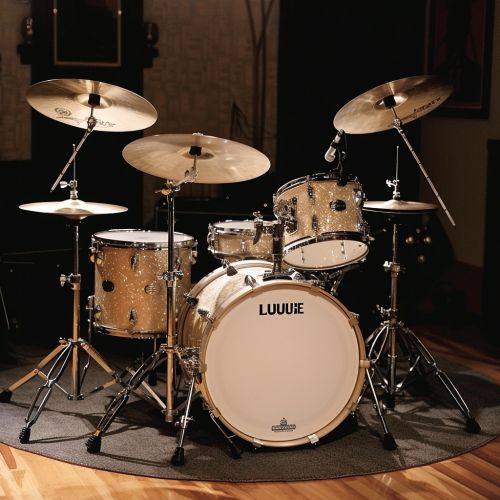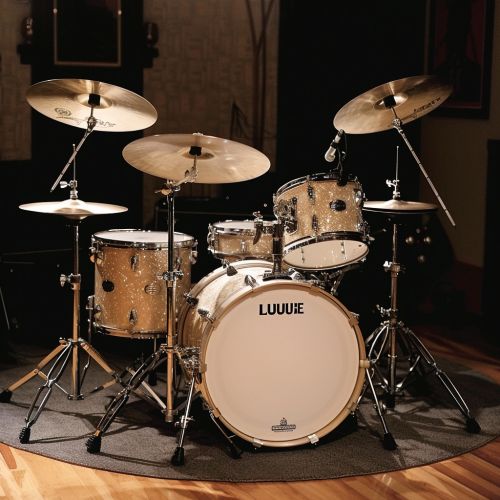Ludwig drum kit
Overview
The Ludwig drum kit is a renowned percussion instrument set, widely recognized for its significant contribution to the development of modern drumming. Originating from the Ludwig Drum Company, established in 1909 by William F. Ludwig and his brother Theobald Ludwig, the Ludwig drum kit has become synonymous with quality and innovation in the drumming community. This article delves into the history, components, notable models, and impact of Ludwig drum kits on the music industry.
History
The Ludwig Drum Company was founded in Chicago, Illinois, and quickly gained a reputation for producing high-quality drums. The company's breakthrough came in 1918 with the introduction of the first commercially successful bass drum pedal. This innovation allowed drummers to play faster and more complex rhythms, revolutionizing the way drums were played.
The 1960s marked a golden era for Ludwig, largely due to the endorsement of The Beatles' drummer, Ringo Starr. Starr's use of a Ludwig drum kit during the band's historic performance on The Ed Sullivan Show in 1964 catapulted the brand to international fame. The Ludwig logo became an iconic symbol in the music world, and the company's sales soared.
Components of a Ludwig Drum Kit
A standard Ludwig drum kit typically includes several key components, each contributing to the overall sound and playability of the set. These components are:
Bass Drum
The bass drum, also known as the kick drum, is the largest drum in the kit. It provides the low-end thump that forms the foundation of the drum sound. Ludwig bass drums are known for their deep, resonant tone and sturdy construction.
Snare Drum
The snare drum is characterized by its sharp, staccato sound, produced by the tensioned snares stretched across the bottom head. Ludwig snare drums are highly regarded for their sensitivity and versatility, making them suitable for a wide range of musical genres.
Toms
Toms, or tom-toms, are cylindrical drums that come in various sizes. They are typically mounted on the bass drum or on separate stands. Ludwig toms are celebrated for their warm, melodic tones and excellent tuning stability.
Hi-Hat
The hi-hat consists of two cymbals mounted on a stand, operated by a foot pedal. It produces a distinctive "chick" sound when closed and a shimmering wash when played open. Ludwig hi-hats are known for their smooth action and crisp sound.
Cymbals
In addition to the hi-hat, a Ludwig drum kit often includes crash, ride, and splash cymbals. These cymbals add accents and texture to the drum sound. Ludwig collaborates with leading cymbal manufacturers to offer high-quality cymbals that complement their drum kits.


Notable Models
Ludwig has produced several iconic drum kits over the years, each with its unique features and characteristics. Some of the most notable models include:
Ludwig Black Beauty
The Ludwig Black Beauty snare drum is one of the most sought-after snare drums in the world. Known for its rich, full-bodied sound and stunning black nickel-plated brass shell, the Black Beauty has been a favorite among professional drummers since its introduction in the 1920s.
Ludwig Supraphonic
The Ludwig Supraphonic snare drum is another legendary model, renowned for its bright, cutting sound and exceptional sensitivity. Its seamless aluminum shell and chrome plating make it a durable and visually appealing choice for drummers.
Ludwig Vistalite
Introduced in the 1970s, the Ludwig Vistalite drum kit features acrylic shells that produce a powerful, punchy sound. The transparent shells also make a striking visual statement, making Vistalite kits popular among rock drummers.
Impact on Music
Ludwig drum kits have had a profound impact on the music industry, influencing the sound and style of countless drummers and bands. The company's commitment to innovation and quality has made Ludwig a trusted name in drumming, and its instruments have been used in a wide range of musical genres, from jazz and rock to pop and classical.
